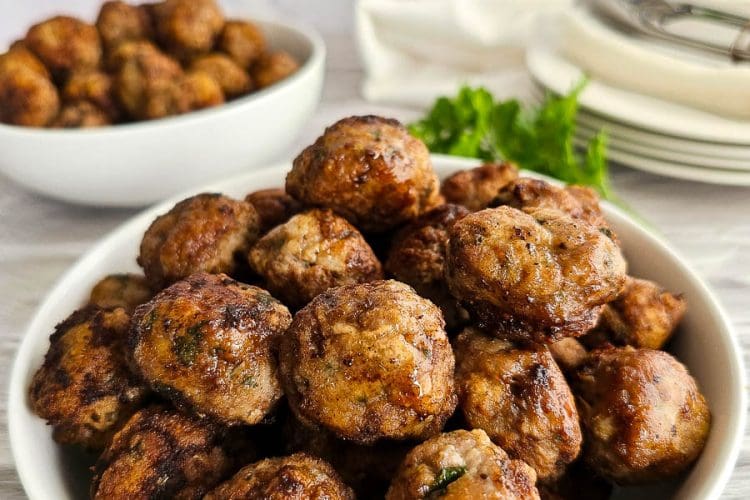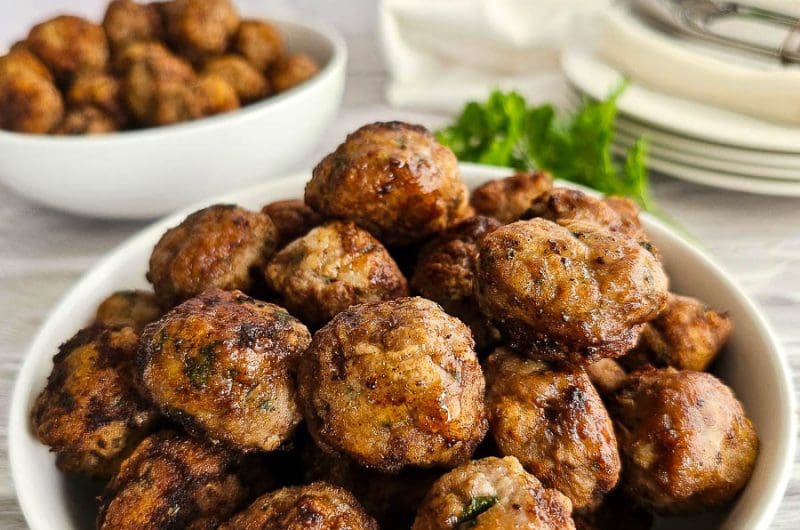Looking for a crowd-pleasing appetiser for your next gathering? Look no further – these juicy Greek Meatballs are guaranteed to impress.
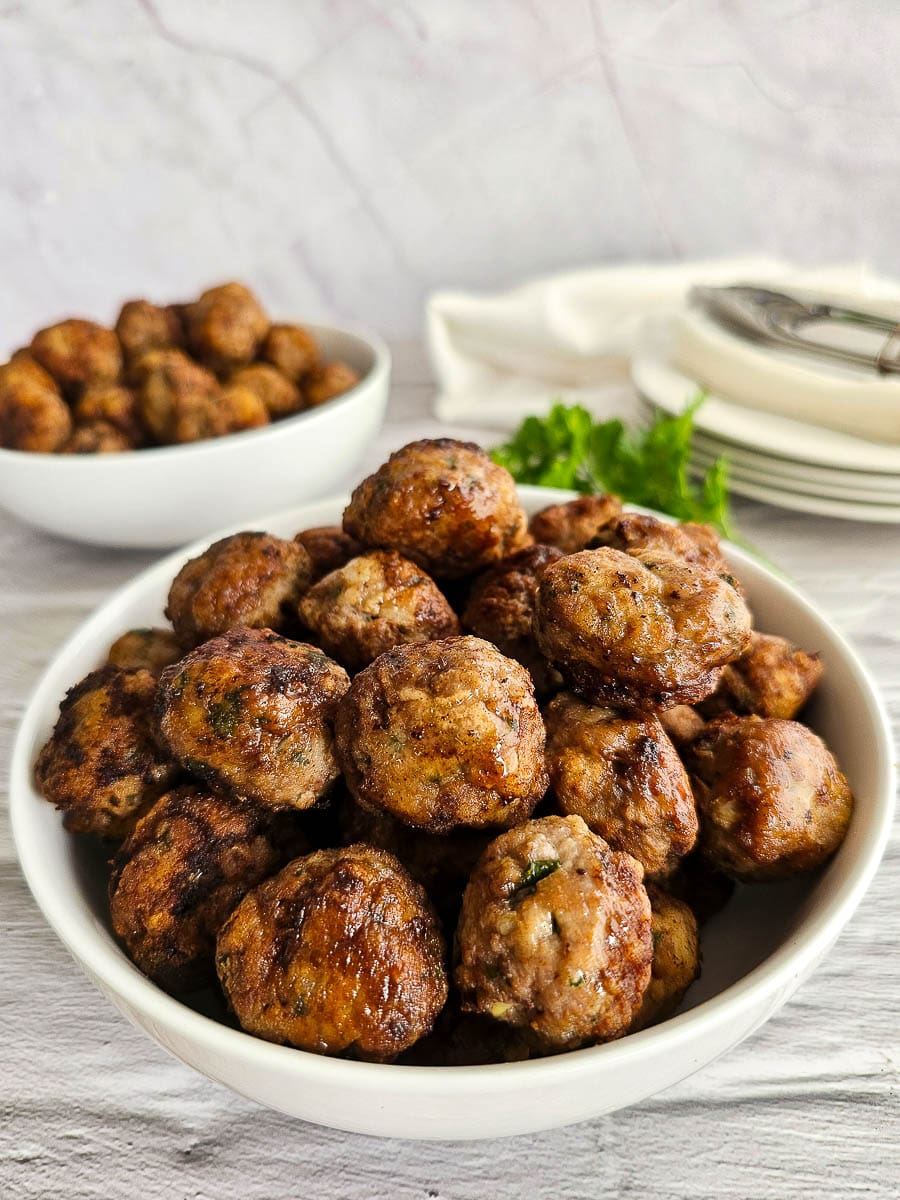
Greeks love their Keftedes! While traditional Greek Keftedes are typically made with ground meat (often beef or lamb), seasoned with herbs and spices, and then shallow fried, deep fried, or baked, there are many variations of keftedes. These include Chickpea Keftedes (Revithokeftedes), Potato Keftedes (Patatokeftedes), Greek Zucchini Fritters (Kolokithokeftedes), Tomato Keftedes (Domatokeftedes), and many more. The list is endless!
These Greek Meatballs are made with ground beef mince, lightly mixed with onion, garlic, parlsey and mint and are then shallow fried. They can be served on their own, either hot or cold or as part of a meze board, alongside Tzatziki (Greek Yoghurt Dip), pita bread, grilled haloumi and Taramosalata (Greek Fish Roe Dip). For a satisfying lunch or dinner, serve them wrapped in pita bread, generously drizzled with Tzatziki and topped with a Greek Salad. These Greek Meatballs are perfect for any occasion.
What type of meat can you use for Greek Meatballs?
Greek Meatballs can be made with beef mince, lamb mince, or a blend of beef and pork mince. My mum always makes her meatballs with beef mince. When selecting beef mince for recipes, I typically opt for extra lean varieties with less than 5% fat. However, for these meatballs, I buy ground beef mince with 10% fat content. While still relatively lean, the extra fat content adds more moisture and flavour to the meatballs. To further enhance their juiciness, I incorporate a tablespoon of extra virgin olive oil into the mixture.
Greek Meatballs Ingredients
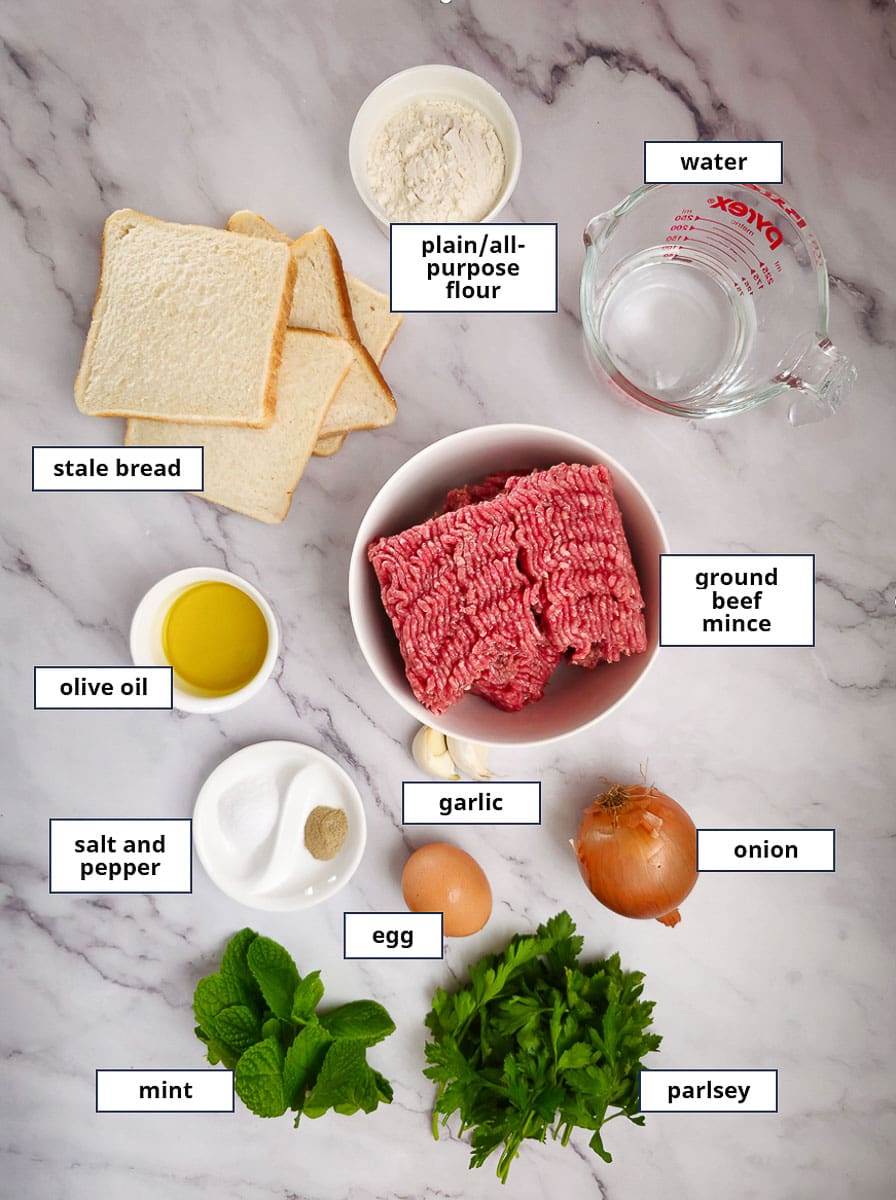
- Beef mince / ground beef: I use lean beef mince with about 10% fat. While still relatively lean, the extra fat content adds more moisture and flavour to the meatballs.
- Bread: I usually use white sliced sandwich bread, but use whatever bread you have on hand. Use stale bread as it’s easier to work with and absorbs moisture better.
- Water: Helps to soften the bread and enhances the moisture content of the meatball mixture.
- Onion: Adds flavour and moisture to the meatball mixture.
- Parsley and mint: Adds a refreshing and aromatic element, giving the meatballs their characteristic Greek flavour profile.
- Olive oil: The olive oil is incorporated into the meatball mixture to compensate for the lean meat used. I use extra virgin olive oil.
- Salt and pepper: I offer suggestions but feel free to adjust the amounts to your liking. I use white pepper, but you can substitute for black pepper.
- Flour: Used for rolling the meatballs before cooking. Coating the meatballs in flour helps to create a crispy exterior when cooked.
Health benefits of Greek Meatballs
These Greek Meatballs offer a balanced mix of lean protein, flavourful herbs, and heart-healthy fats. Beef mince is an excellent source of protein, which is essential for building and repairing tissues in the body. Protein also helps in maintaining muscle mass and keeps you feeling full. Onions and garlic are rich in antioxidants and may help boost immune health. Parsley and mint contribute vitamin A (eye health), vitamin C (immunity) and vitamin K (blood clotting and bone health), along with antioxidants which help protect cells from damage. Additionally, olive oil, a staple of Mediterranean cuisine, adds heart-healthy monounsaturated fats, promoting cardiovascular health. Overall, these Greek Meatballs can make for a delicious and nutritious meal.
How to make Greek Meatballs
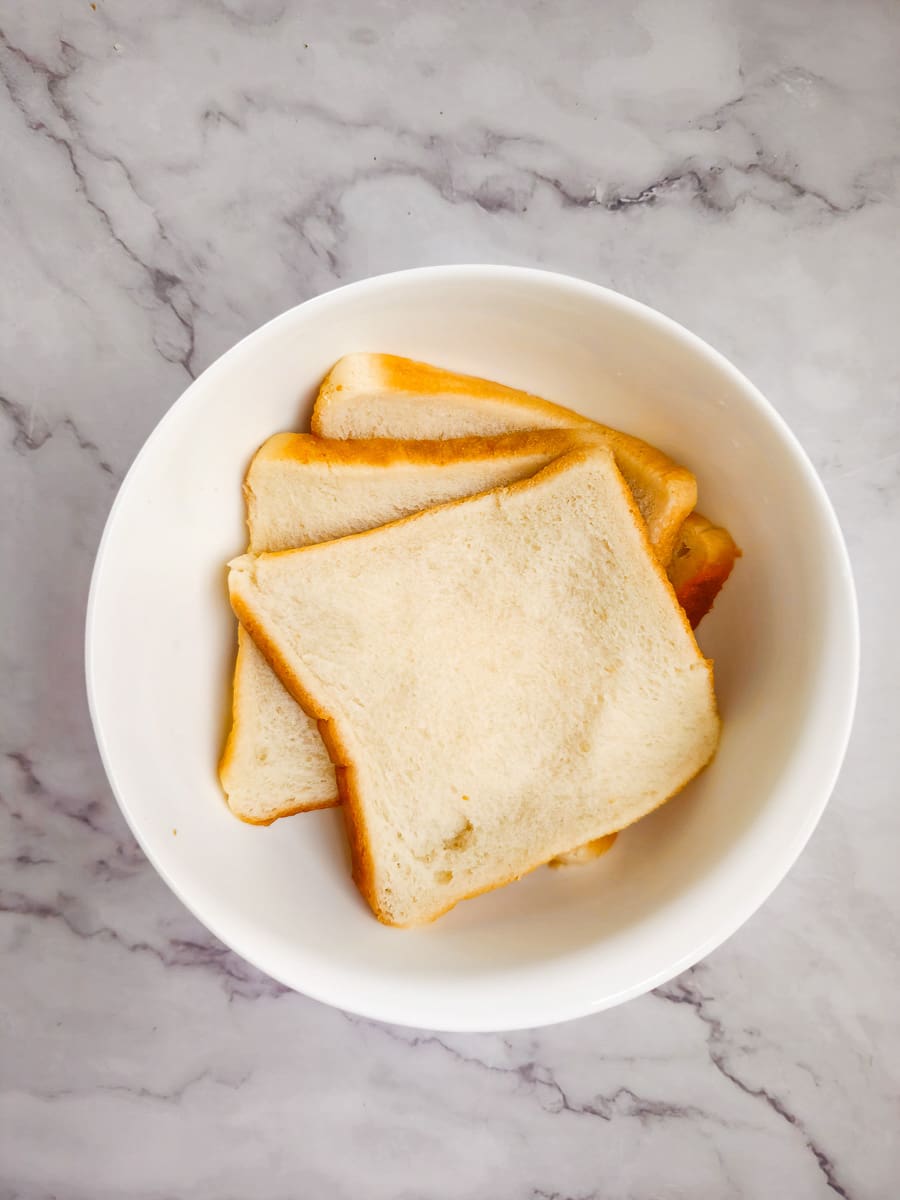
1. Place bread in a small bowl and cover with water. Soak for a few seconds.

2. Using your hands, squeeze out the excess water. Discard water.
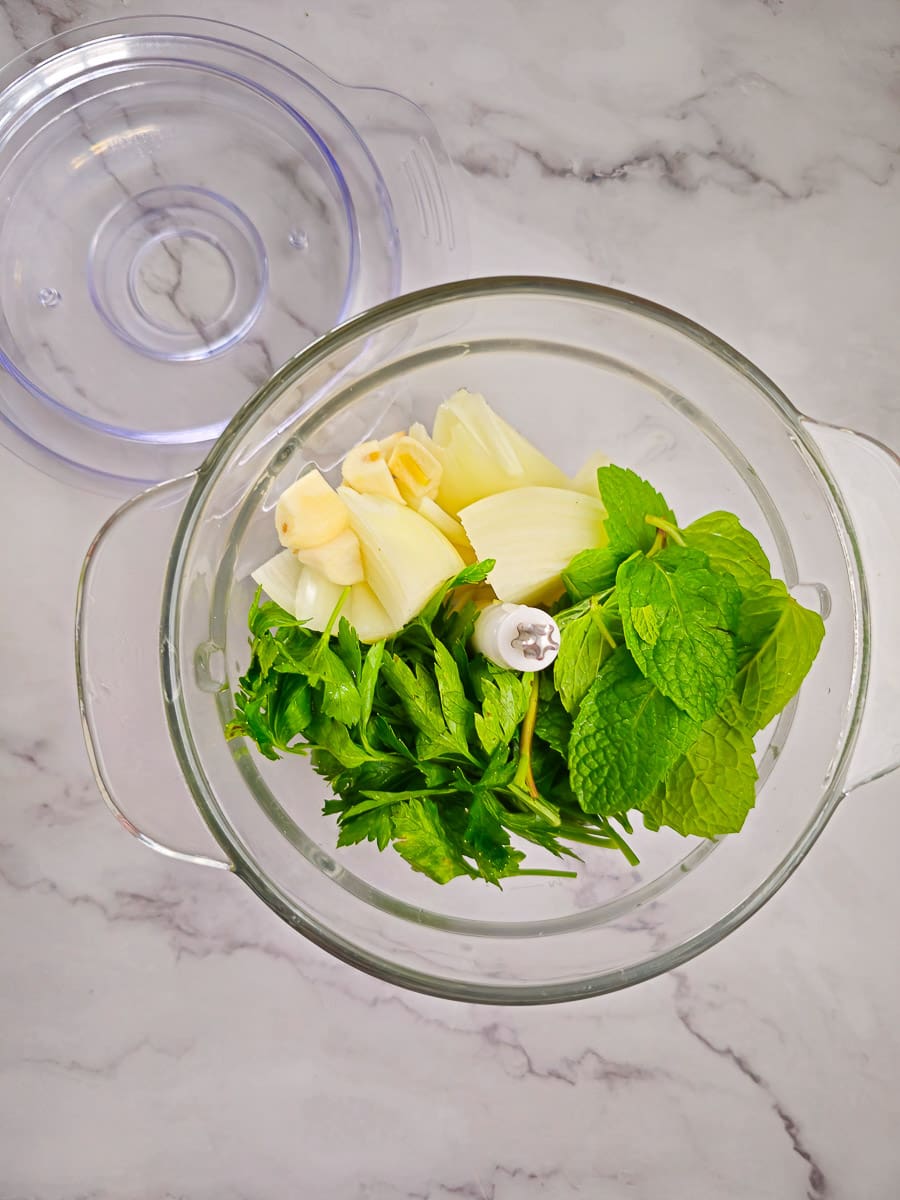
3. Place onion, garlic, parsley and mint in a food processor.
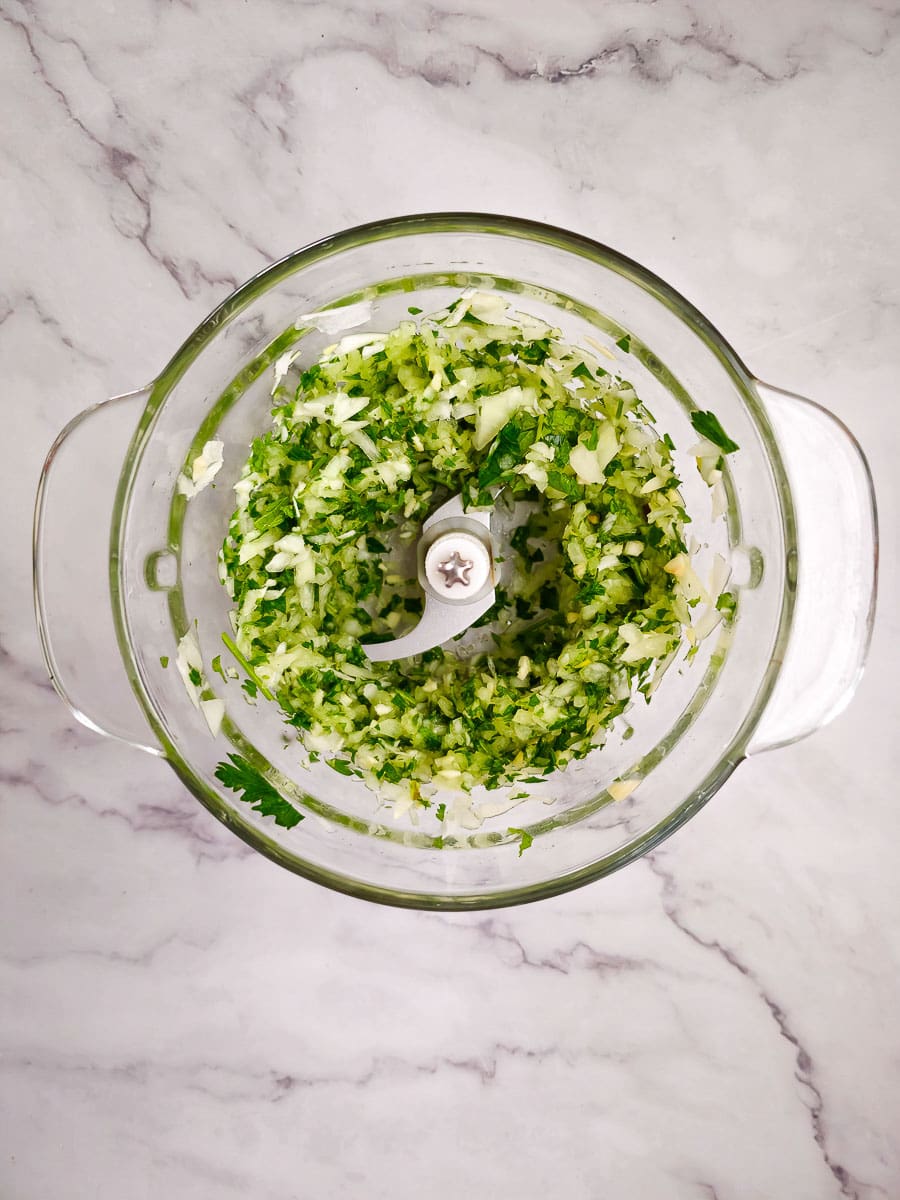
4. Pulse for a few seconds, just until the ingredients are finely chopped and combined.
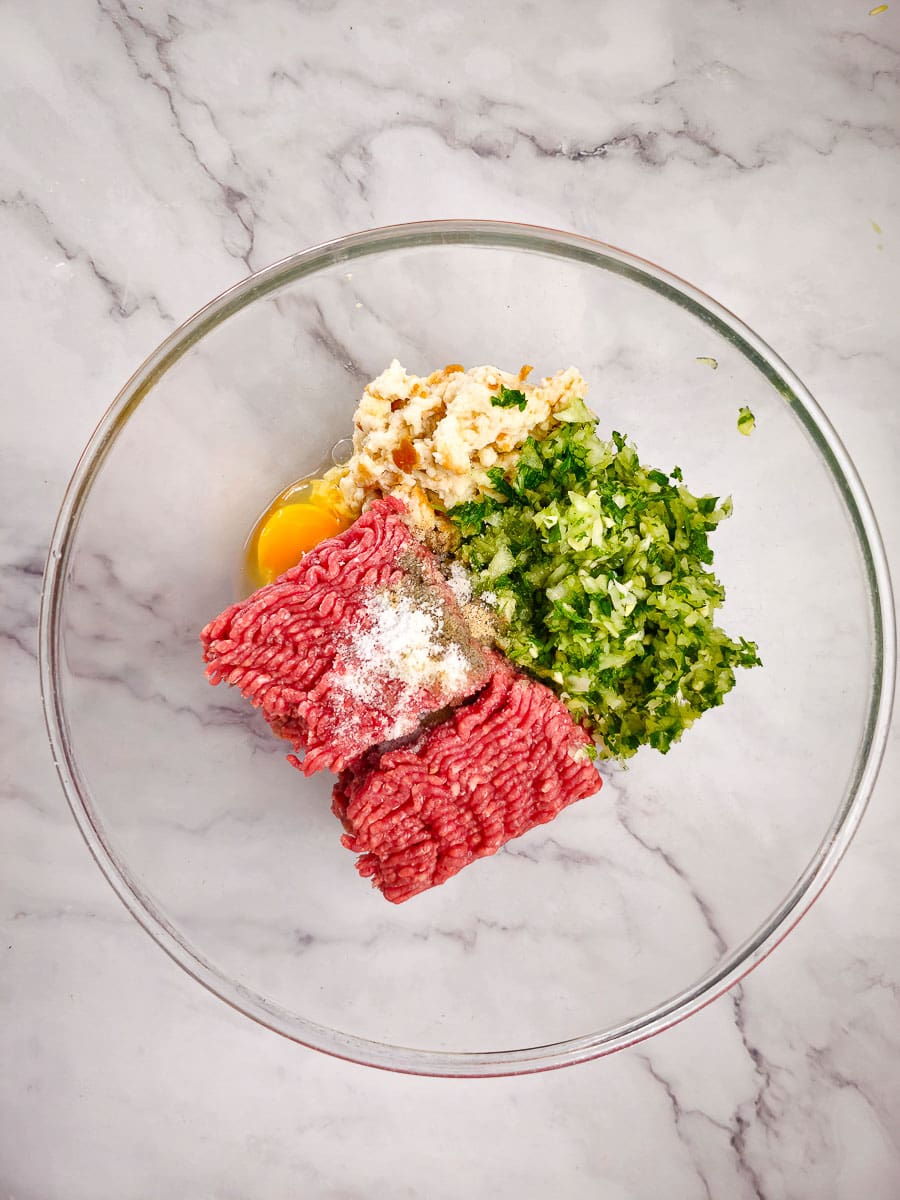
5. In a large mixing bowl, combine mince, bread, olive oil, egg and onion mixture.
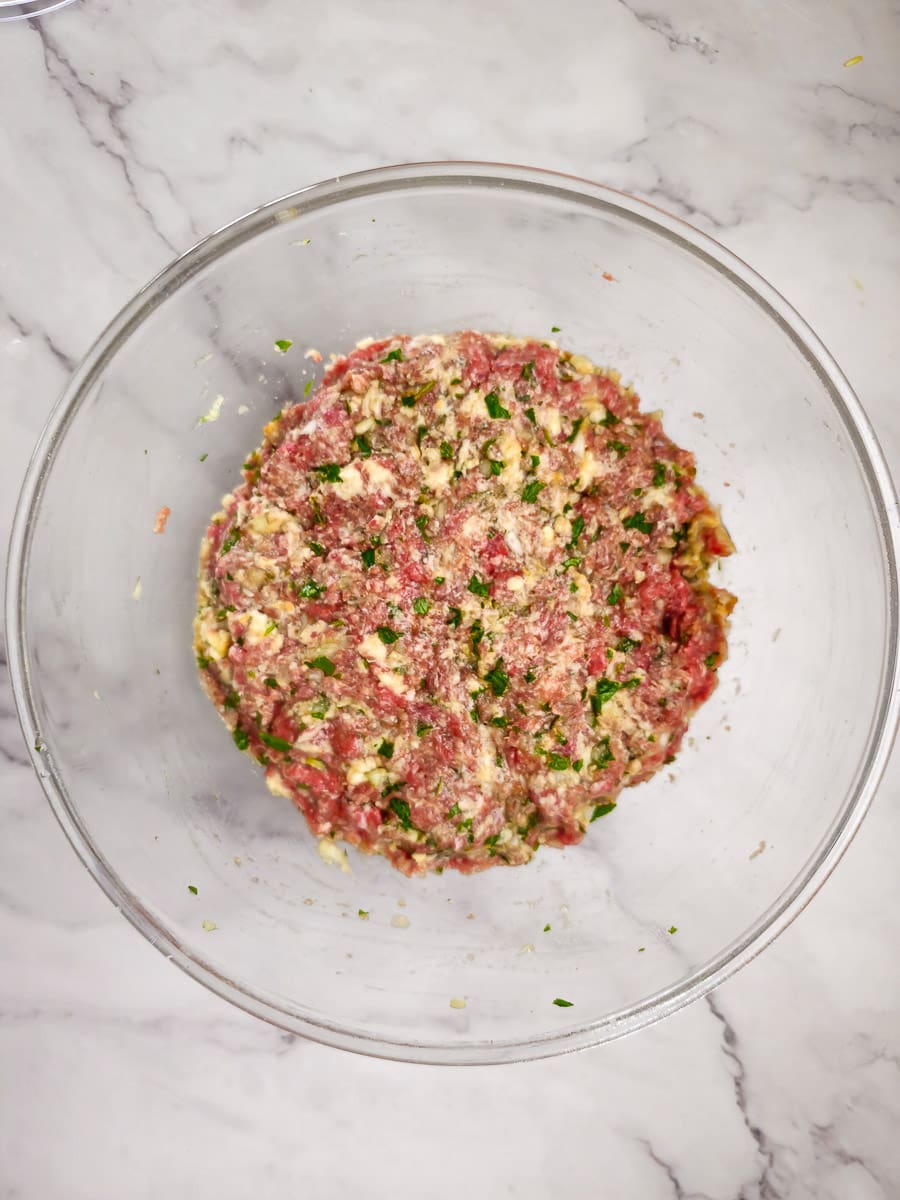
6. Mix lightly with your hands until just combined.
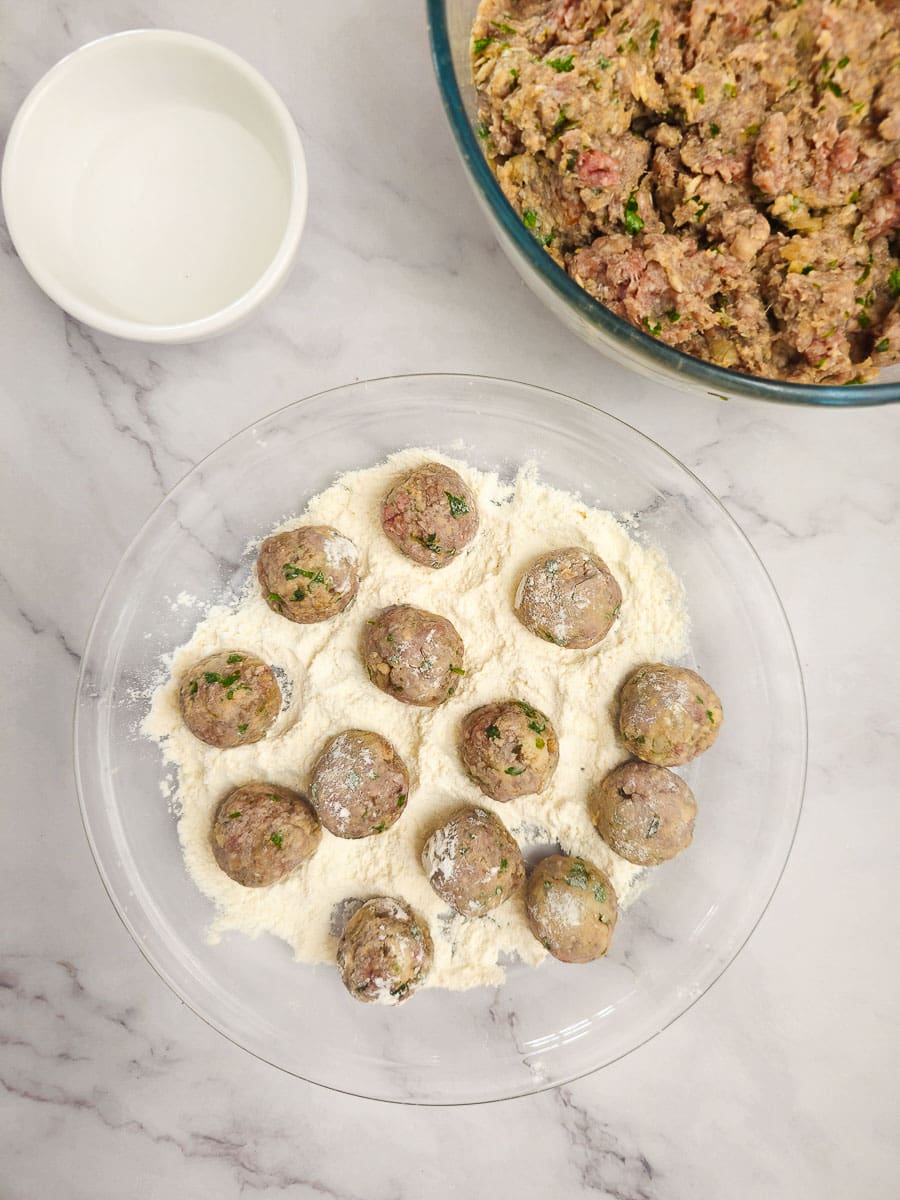
7. With wet hands, roll tablespoons of mixture into small even-sized balls. Roll meatballs in the flour.
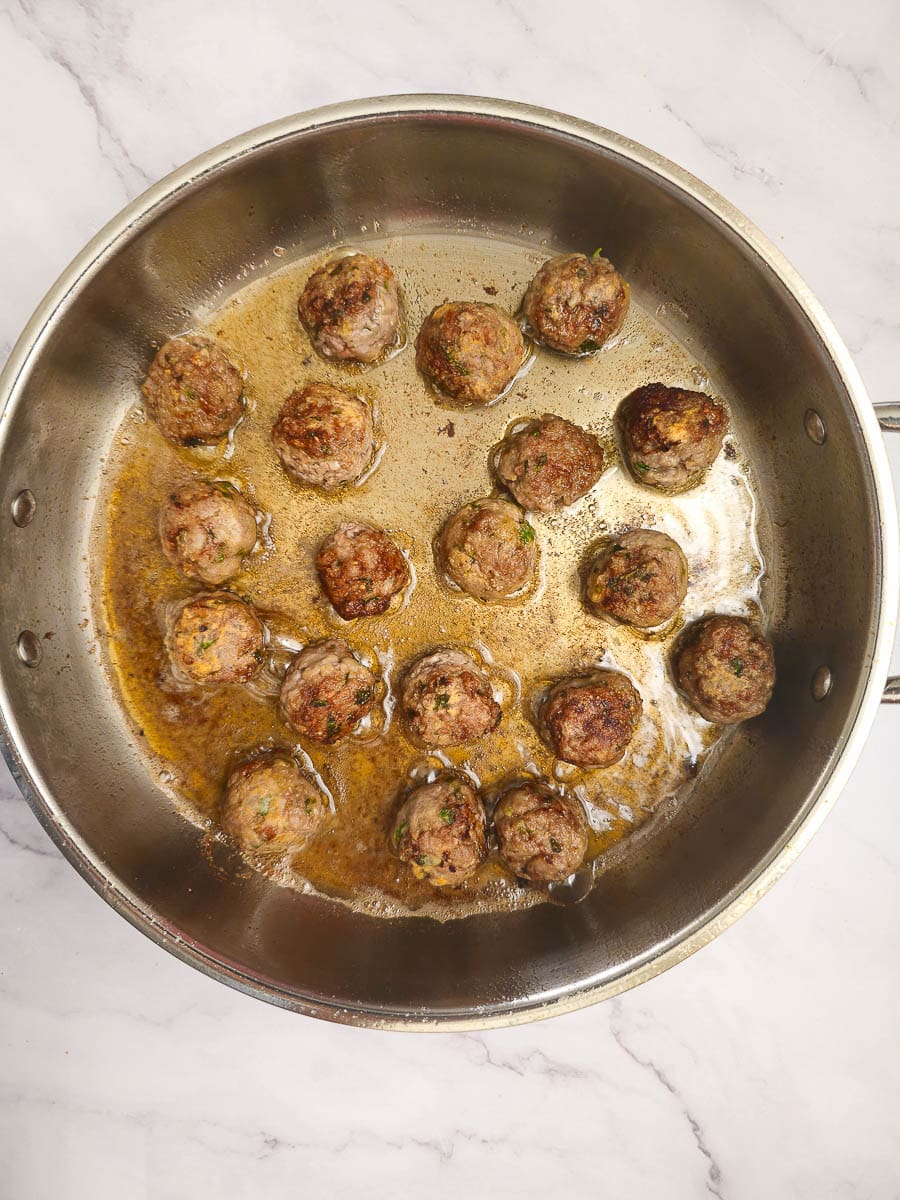
8. Cook meatballs in batches. Turn them over or roll them around the frying pan and cook for 5-6 minutes until browned and cooked through.
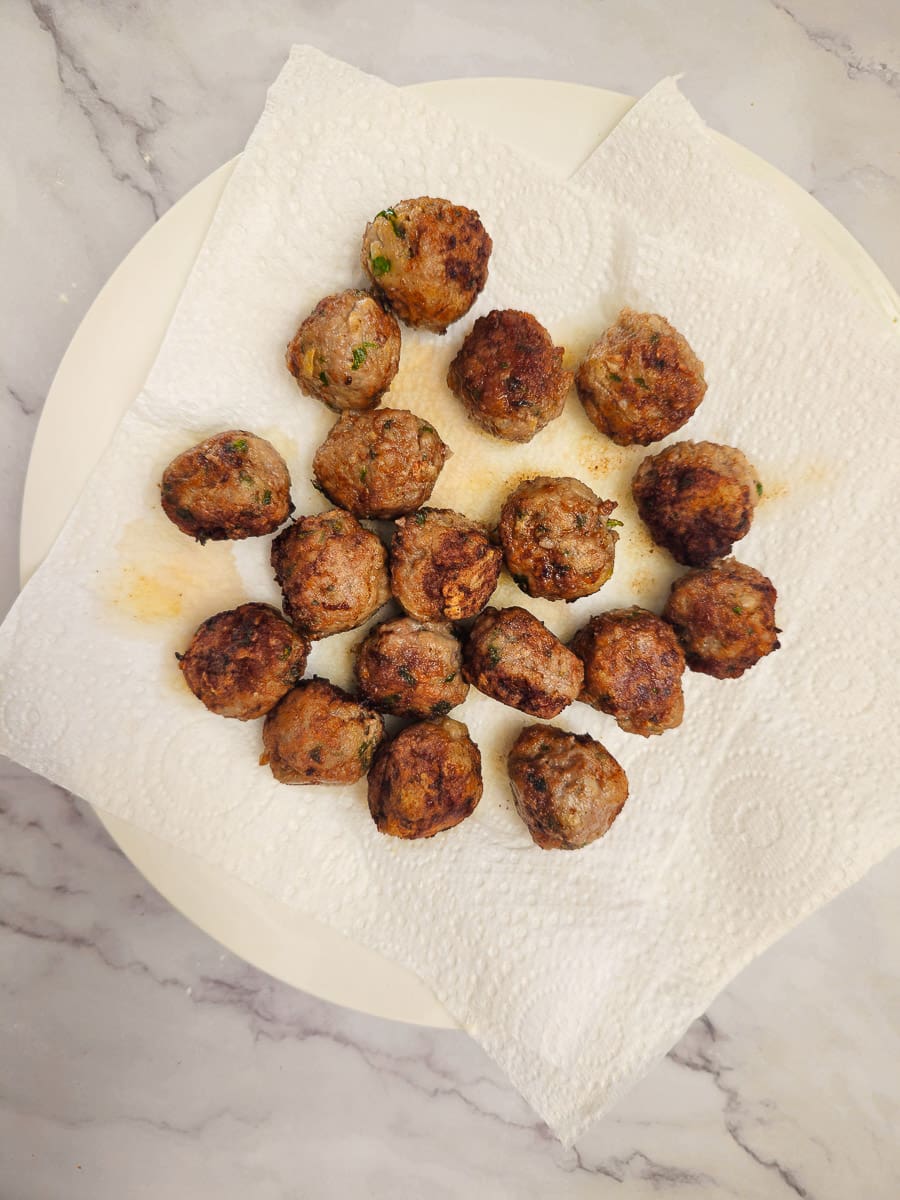
9. Drain on absorbent paper.
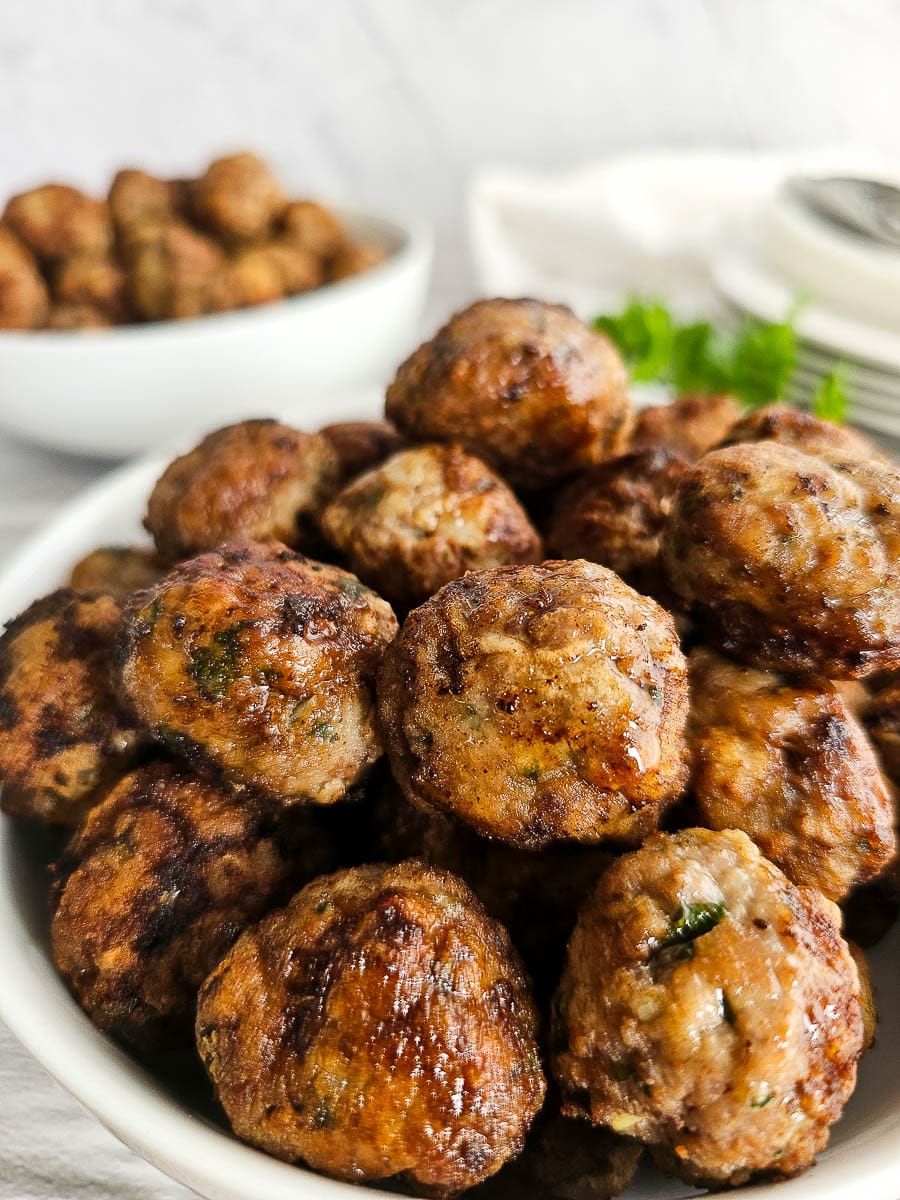
10. Serve hot or cold.
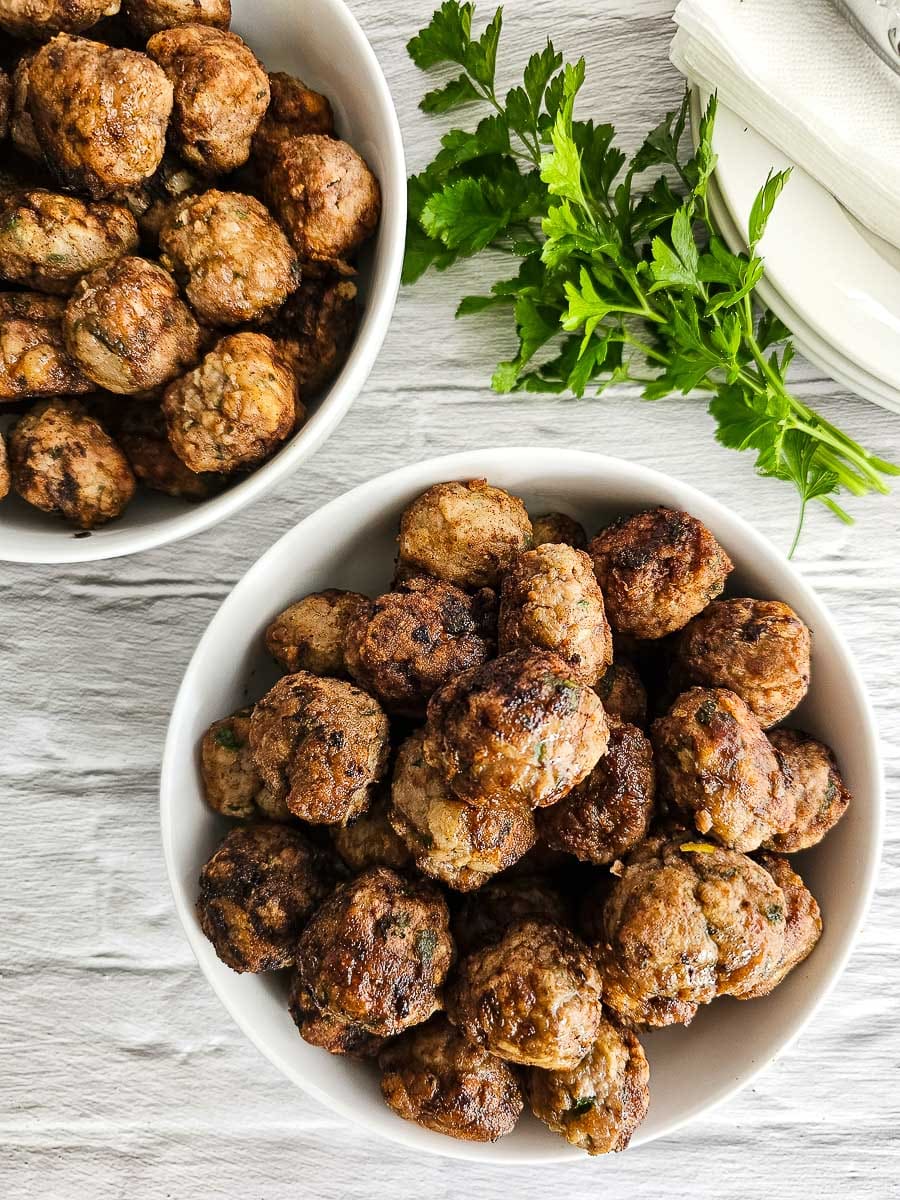
Serve as part of a meze platter or enjoy Greek Meatballs wrapped in pita bread with Greek Salad and Tzatziki.
Tips for making Greek Meatballs (Keftedes)
How to make juicy meatballs
- Choose the right meat: Use lean ground meat with a slightly higher fat content, such as ground beef with at least 10% fat. The fat helps keep the meatballs moist and juicy during cooking.
- Add moisture: Incorporate ingredients that add moisture to the meat mixture, such as finely grated onion, minced garlic and eggs.
- Include bread: Adding breadcrumbs soaked in water to the meat mixture helps to add moisture and bind the ingredients together. Use stale bread for better absorption.
- Don’t overmix: Mix the meat mixture gently until just combined. Overmixing can lead to dense and tough meatballs.
- Use eggs: Eggs act as a binder and help hold the meatballs together while adding moisture.
- Even sizes: Form the meatballs into evenly sized balls to ensure they cook at the same rate. However, avoid packing the meat too tightly, as this can result in dense meatballs.
- Gentle shaping: Instead of tightly packing the meat, shape the meatballs gently to maintain a tender texture.
- Cook gently: Avoid overcooking the meatballs, as this can cause them to become dry. Cook them until they are just cooked through and no longer pink in the centre.
- Rest before serving: Allow the meatballs to rest for a few minutes before serving. This allows the juices to redistribute throughout the meat, resulting in juicier meatballs.
Why do my meatballs fall apart?
- Lack of a binding agent: Meatballs need a binding agent such as breadcrumbs or eggs, or a combination of both to hold them together. Bread is often used as a key ingredient to help meatballs stick together. When mixed with the meat and other ingredients, bread absorb moisture, acting as a binder. This helps hold the meatballs together during cooking, preventing them from falling apart. Eggs, another common binding agent, help bind the ingredients together and contribute to the overall structure of the meatballs.
- Insufficient Resting Time: Allowing the meatball mixture to rest in the refrigerator for a short period before forming the meatballs can help the flavours meld and the mixture to firm up, making it easier to shape the meatballs and reducing the likelihood of the meatballs falling apart during cooking.
Can I use dried breadcrumbs instead of bread?
Yes, you can use dried breadcrumbs instead of fresh breadcrumbs. Substitute the bread with 1 cup dry breadcrumbs and soak them in about ¼- ½ cup water for a few minutes before adding to the meatball mixture. Start with 1/4 cup water and gradually add more water if needed until the breadcrumbs are moistened but not overly wet. This helps to rehydrate the breadcrumbs and ensures they bind well with the other ingredients.
Why does my oil turn dark when shallow frying meatballs?
When shallow frying meatballs coated with flour, the flour can break down in the hot oil, leaving residue that affects the flavour and appearance of the meatballs. If this happens, just swap out the used oil for fresh oil before frying more batches.
Can I bake these Greek Meatballs?
To bake meatballs, preheat your oven to 180°C / 350°F and pour 3 tablespoons (60 ml / 2 fl oz) of olive oil into a baking dish, ensuring even coverage. Roll the meatballs in the olive oil to coat them evenly, then place them in the greased dish, spacing them out evenly. Bake for 18-20 minutes until the meatballs are cooked through and golden brown on the outside. Shallow frying typically results in a crispier exterior due to the direct contact with hot oil, while baked meatballs tend to be softer on the outside but still juicy on the inside.
How to store meatballs
- Place them in an airtight container and refrigerate for 3-4 days.
- To freeze cooked or uncooked meatballs, place the meatballs individually on a baking sheet and freeze until solid. Then, transfer meatballs to a freezer-safe container or bag, where they can be stored for up to 3 months. When ready to use, thaw frozen meatballs overnight in the refrigerator before reheating or cooking.

